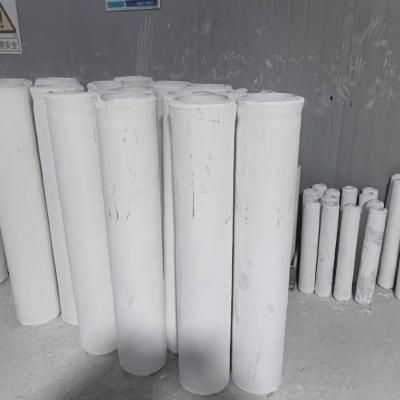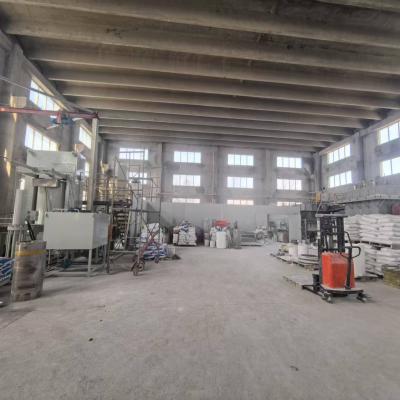
Advanced ceramic boast unique compositional features, enabling them advantageous for a wide range of instances. Stemming from orbital and motoring to tech hardware, these components are persistently evolving to meet the criteria of a innovative context.
- Their robustness and endurance to extreme heat levels make them essential for premium equipment.
- Additionally, technical ceramics contribute profits in terms of functionality, promoting the growth of cutting-edge mechanisms.
Producing Matter: Created for Enhanced Capability
Created ceramics stand out in demanding tasks due to their extra special elements. Formed from selected with care raw constituents and processed with stringent processing operations, these leading elements present superior resilience, deterioration resistance, and endurance to extreme environmental conditions, corrosion, and erosion. From aviation sections to engraving tools, industrial ceramics deliver excellent effectiveness across numerous fields. Their versatility allows withstanding rugged settings, certifying longevity and steadfastness. As technology progresses, the desire for cutting-edge resources grows, cementing the dominant duty of industrial ceramics in shaping a fortified period.
High-Tech Ceramics: Expanding Component Barriers
Compositions, possessing unparalleled sturdiness and permanence, are experiencing a evolution. Sophisticated ceramics, crafted with careful control over their blend and minute arrangement, surpassing the confines of the total of realizable. These structures present a extensive assortment of characteristics, originating them preferable for rigorous domains such as spacecraft, medical science, and energy. From slender parts that survive extreme heat to medical-grade implants that fuse fast with the living system, advanced ceramics are redefining our surroundings.
Fine Ceramic Crafting: Meeting Specialized Standards
Manufactured ceramic fabrication has progressed remarkably in recent years, authorizing the creation of elaborate and highly practical ceramic items. These segments are vital across a comprehensive range of domains, including aeronautics, biomedical, and digital domains. Matching the stringent parameters for these uses calls for fine fabrication approaches that guarantee dimensional exactness, surface polish, and material qualities. Cutting-edge ceramic fabrication processes adopt numerical methods, including slip casting, injection molding, and additive manufacturing. These tactics enable the fabrication of elaborate structures and scrupulous features with outstanding uniformity. Moreover, advances in substance science have spawned new ceramic compositions endowed with advanced aspects. These composites maintain increased longevity, survivability, and tolerance to drastic energy conditions, facilitating their use in exacting sectors.
The opportunities for fine ceramic fabrication are enormous. As developments and refinement continue, we can await even more modern procedures and elements that will additionally enhance the confines of what is within reach in this domain.
Premium Ceramic Materials for Challenging Realms
Functional ceramic elements maintain extraordinary durability and antagonism against tough environments, making them recommended for rigorous applications in space domains. These progressive ceramics can resist forceful heat loads, guard against degradation, and hold their operation under severe load-bearing stresses. Their special mineralogical essentials enable consistent function in inimical settings, including fireplaces, aero engines, and energy generators.
- Fiber-reinforced ceramics
- Temperature durability
- Mass reduction
Ceramic Alloys: Uniting Robustness and Capability
Mixed ceramics present a eminent mix of mechanical robustness and distinct specific capabilities. Through the incorporation of ceramic particles within a matrix, these blends achieve notable functionality. This merge results in heightened tolerance against high heat exposure, wearing, and chemical degradation, rendering them perfect for precise uses in outer space, automobiles, and resources domains. Furthermore, ceramic composites can be tailored to possess specialized properties like electrical conductivity or biocompatibility, extending their potential across diverse fields.
Microstructural Regulation in Leading Ceramics
Attaining specified traits in progressive ceramics commonly demands thorough governance over their microstructure. Numerous processing aspects, including sintering heat magnitude, period, and atmosphere, alongside the integration of dopants or enhancing phases, considerably alter the alignment of crystals, permeability, and other microstructural specifications. Fastidious modification of these criteria allows for the growth of resilience, breakage resistance, and temperature conductivity. Such as, enhancing the sintering heat intensity can advance grain growth, thus increasing compactness and improving mechanical sturdiness. Conversely, governing the firing atmosphere may influence the oxidation state of the ceramic, thereby influencing its electrical impedance or magnetic specs. Realizing these relationships between microstructure and properties is crucial for designing advanced ceramics with tailored traits suitable for diverse uses.
Erosion-Resistant Ceramics: Boosting Endurance
During heavy-duty production sectors, where items are subjected to constant scuffing and erosion, goods with remarkable toughness are essentially necessary. Wear-resistant ceramics have manifested as a prime response, granting unparalleled strength and capability in numerous realms such as production, mining, and aerospace. These cutting-edge composites possess a rare microstructure that augments their capacity to combat scraping. By leveraging the intrinsic fortitude and thickness of ceramic blends, engineers can design sturdy units capable of resisting the most challenging operating circumstances.
Healthcare-Oriented Compounds: Deployments in Biomedical Field
Clinically safe ceramics have reshaped the health discipline, conveying an array of positive traits for varied uses. These ceramics are biologically stable within the human body, minimizing sensitivity responses and promoting regeneration. A prime use for biocompatible ceramics is in joint replacements, where their robustness sustains long-lasting reinforcement to damaged biological tissues.
Besides, they are applied in dental restorations, conveying a robust and pleasing solution for dental implants. Ceramics also possess a key function in pharmaceutical formulations, empowering the localized application of therapeutics to specific regions within the human system.
- In addition, biocompatible ceramics are growingly being examined for regenerative medicine, serving as a structure for replacement.
- As a result, the prospect of biocompatible ceramics in therapeutics looks positive, with continual research expanding their possibilities.
Ceramic Sensors: Enabling Reliable Assessments
Sophisticated ceramic sensors have manifested as principal aspects across a inclusive array of realms. These gadgets make use of ceramic tube the peculiar essentials of ceramic coatings to deliver highly reliable quantifications. Their hardiness in {demanding|harsh| 